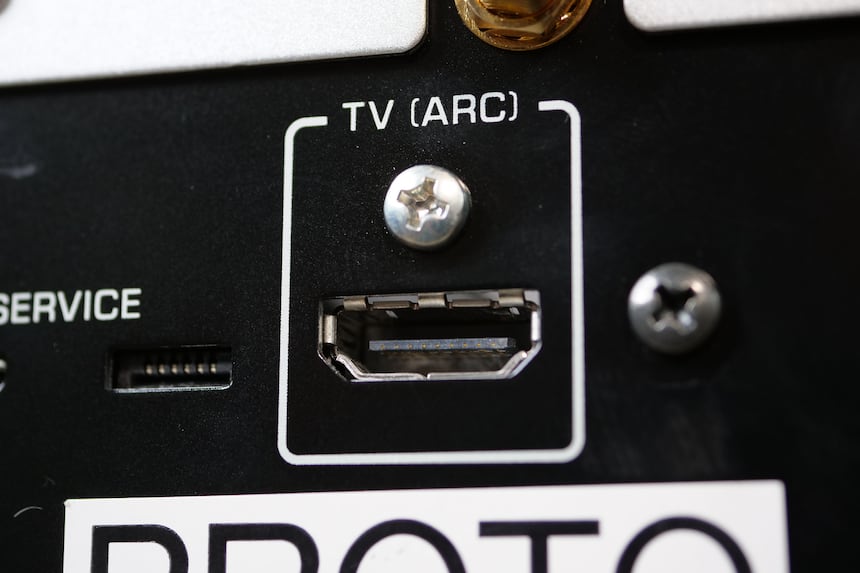The Japanese manufacturer Yamaha has always been able to offer extensive product ranges, from typically mainstream devices at affordable prices to exclusive models at the very top of the scale. Today, the R-N2000A finds itself somewhere in the middle. It incorporates the in-house design techniques of the superb 5000 series as well as its own advanced features to make it compatible with as many systems as possible.
Previously, there were two well-defined separate ranges of integrated stereo amplifiers. The models with a 3-digit reference were the most accessible and included DAC and streaming, while those with four figures were of superior quality, lacking digital function, but with the famous VU meters on the front facade. The R-N2000A brings together these two ranges in a single product, without compromising on quality.
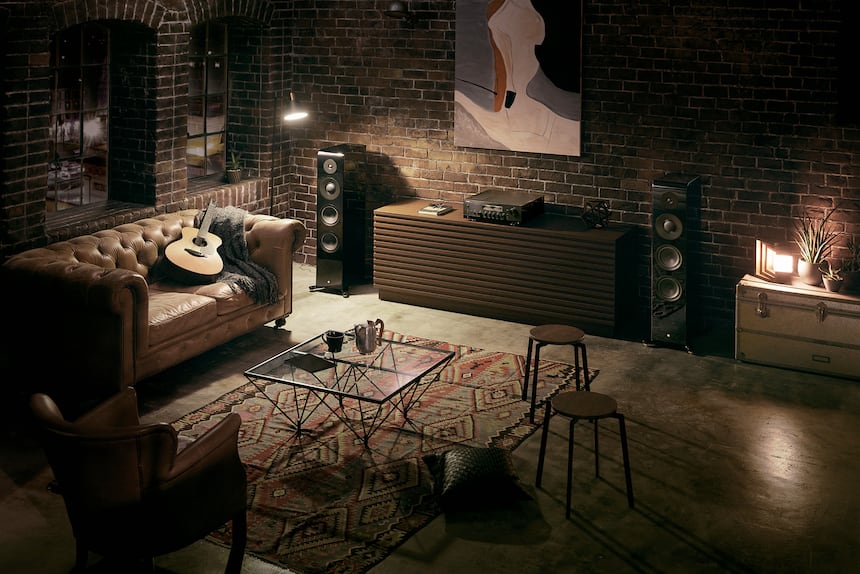
General Presentation of the R-N2000A
Yamaha HiFi devices’ fronts have been easily recognisable for several generations. The control panel uses retro-style buttons, similar to those of the brand’s devices from the 70s. While other manufacturers have preferred to lay the past to rest by offering smooth facades with no protruding dials, Yamaha has chosen to keep them loud and proud.
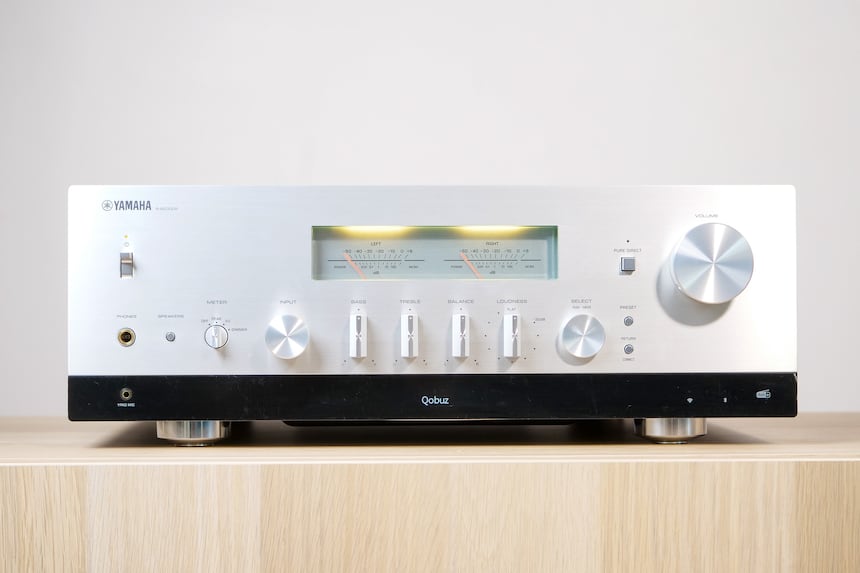
Like the A-S1200, 2200 and 3200 models, the R-N2000A has two backlit VU meters. With needles moving according to the power peaks reached, there’s no denying it is the ultimate in vintage design. But with its lacquered wood side panels, the nostalgia doesn’t just stop there. Everything is set up to win over long-time audiophiles, as well as those who weren’t lucky enough to have experienced the era of these classic HiFi devices.
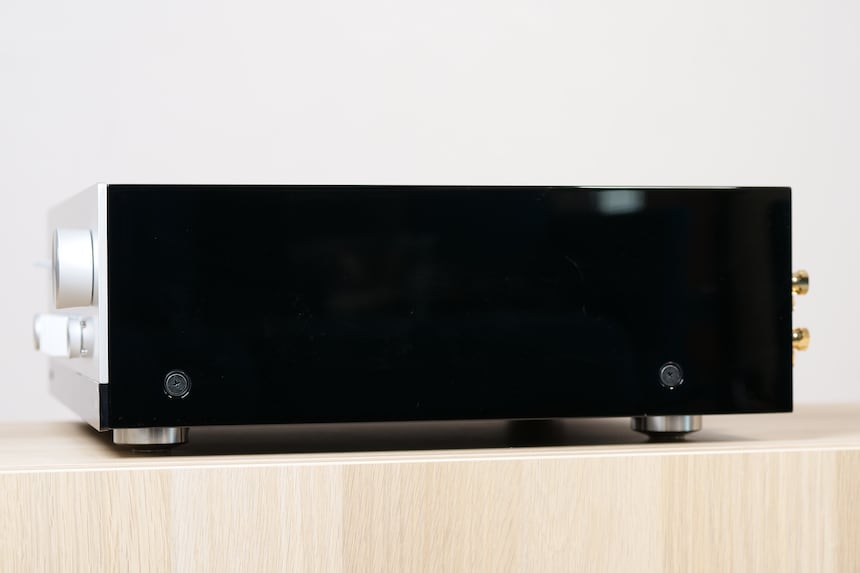
The buttons and knobs allow you to select the desired source, operate some of the main features and modify the bass and treble tones. The variable volume (so dear to Yamaha) has not been forgotten either and gives a small boost to frequencies that tend to fade at low volume. You’ll no doubt have noticed the dark band at the bottom of the front facade; it’s what connects the device to the very latest technologies.
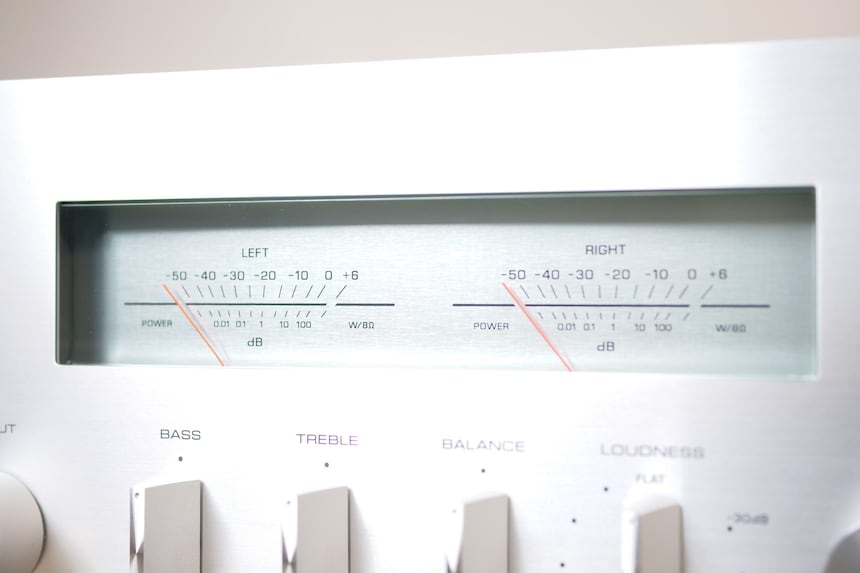
On the left is the socket for connecting the YPAO automatic calibration microphone, the same system used by Yamaha home cinema amplifiers. On the right there are small LEDs to indicate the status of the Bluetooth and WiFi connections. Finally, in the centre there is a small, discreet multipixel display, which names the active source as well as other miscellaneous information like volume.
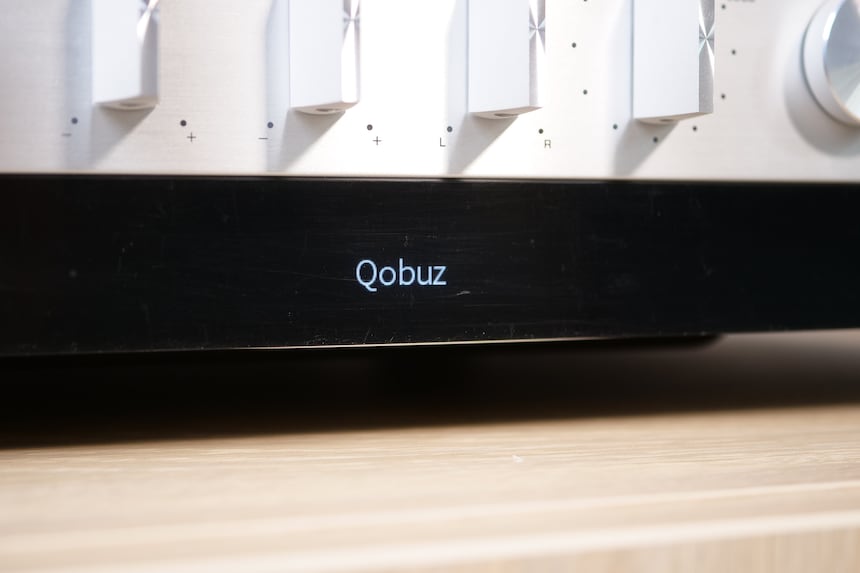
The R-N2000A is robust, which goes some way to explaining its very significant 22-kilo weigh-in. The entire power section is processed in double mono with a rail on each side, which links to its imposing radiator. In the centre, the power transformer is accompanied by four large capacitors. The rest of the circuits are horizontal and on several levels closest to the rear panel connectors.
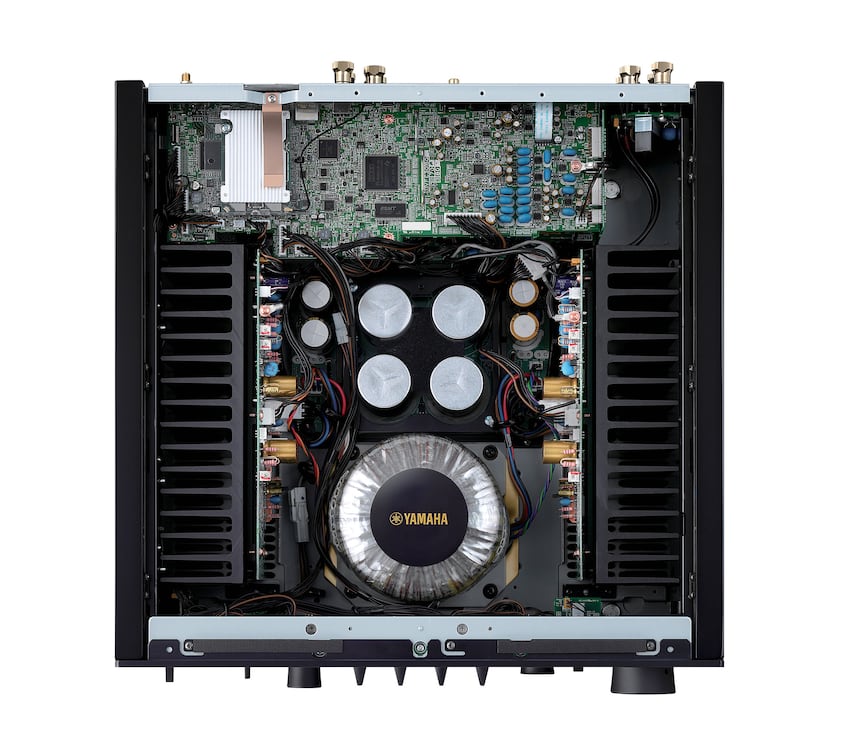
Nothing is left to chance in the overall design. The chassis rests on four silver-plated brass feet to which the components are welded to prevent any mechanical vibrations. The conversion from digital to analog is entrusted to a renowned chip, the ESS Saber ES9026PRO. It allows you to play files and streams in high definition, up to 384 kHz at 32 bits. A DSD256 (via a USB port) is also supported.
Using the R-N2000A
The rear panel offers a good variety of connectors. There are four analog inputs, one of which is linked to a phono preamp. They are accompanied by no less than five digital inputs: one coaxial, two optical, one USB and one HDMI ARC. The latter is becoming widespread in the HiFi world. With its home cinema models and sound bars, we already know that Yamaha is renowned in this area. It would have been a shame not to capitalise on their advantages here.
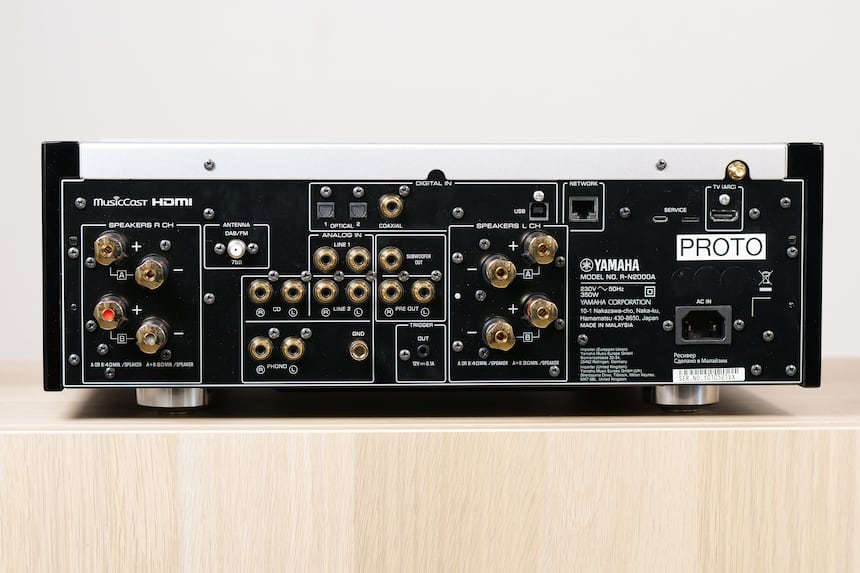
In addition to the superb pure brass speaker terminals (allowing two pairs to be connected simultaneously), there are two pre-amplified outputs: one stereo (for using an external power amplifier) and one mono (for connecting a subwoofer). All filter settings and linked features are accessible. The headphone socket (in 6.35 mm jack format) is located on the front, right next to the button used to select one of the two pairs of speakers.
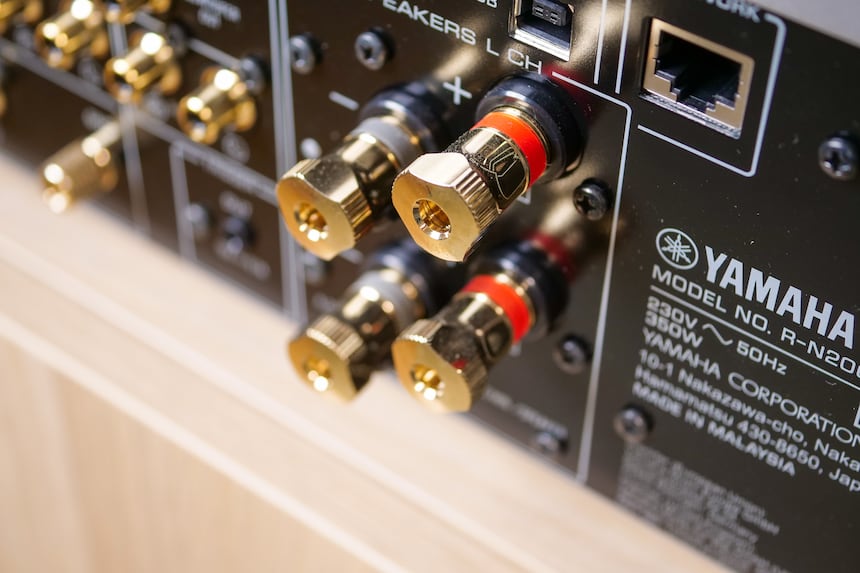
Yamaha provides a traditional infrared remote control with direct keypad buttons for each of the audio inputs. The TV button corresponds to the HDMI ARC socket. We really like the two largest volume keypad buttons which are easy to locate, although you might prefer to use the MusicCast mobile application.
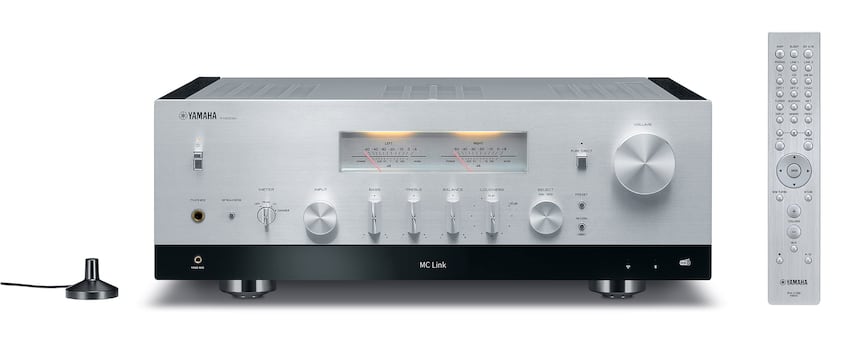
This application is already used to control dozens of Yamaha products in tandem, and it integrates various streaming platforms, including Qobuz. It is also used to select inputs and finely configure the operation of the R-N2000A.
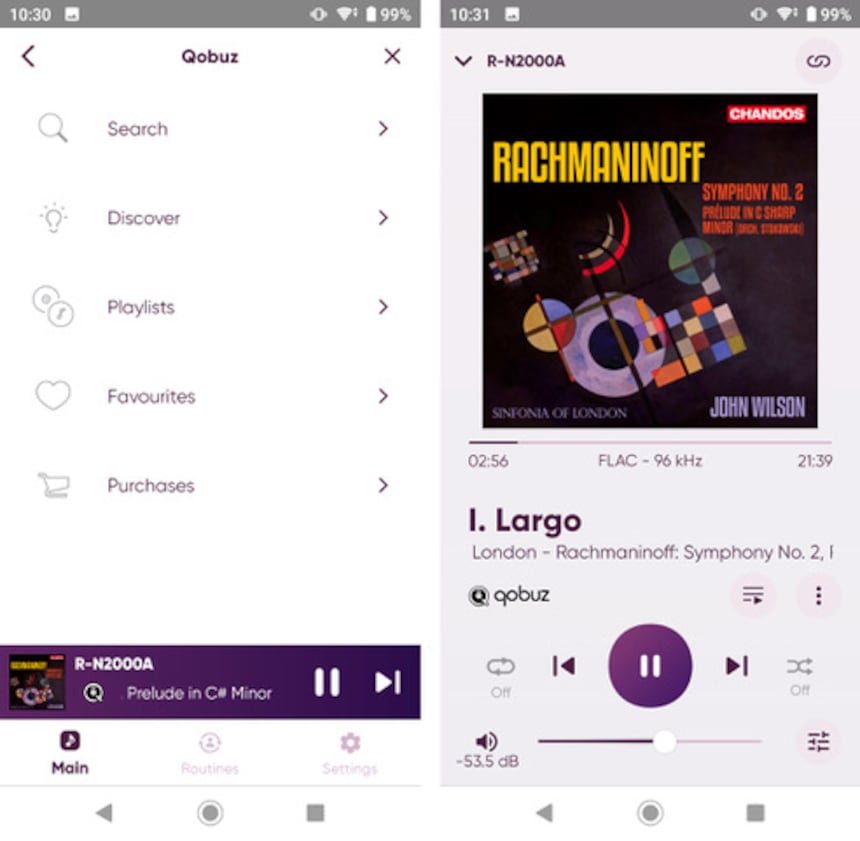
All Qobuz news and recommendations can be found using the “Discoveries” link. Then there are its personal playlists, its favourites, and purchases. The app lets you add titles to existing Qobuz playlists. The editorial content is accessible from the page listing the albums, via the “Contents description” link which has not been translated. There is also information pertaining to the musicians involved in each title, but access to content related to artists has not been provided. It still lacks a fast forward/reverse feature within a song as well as gapless playback.
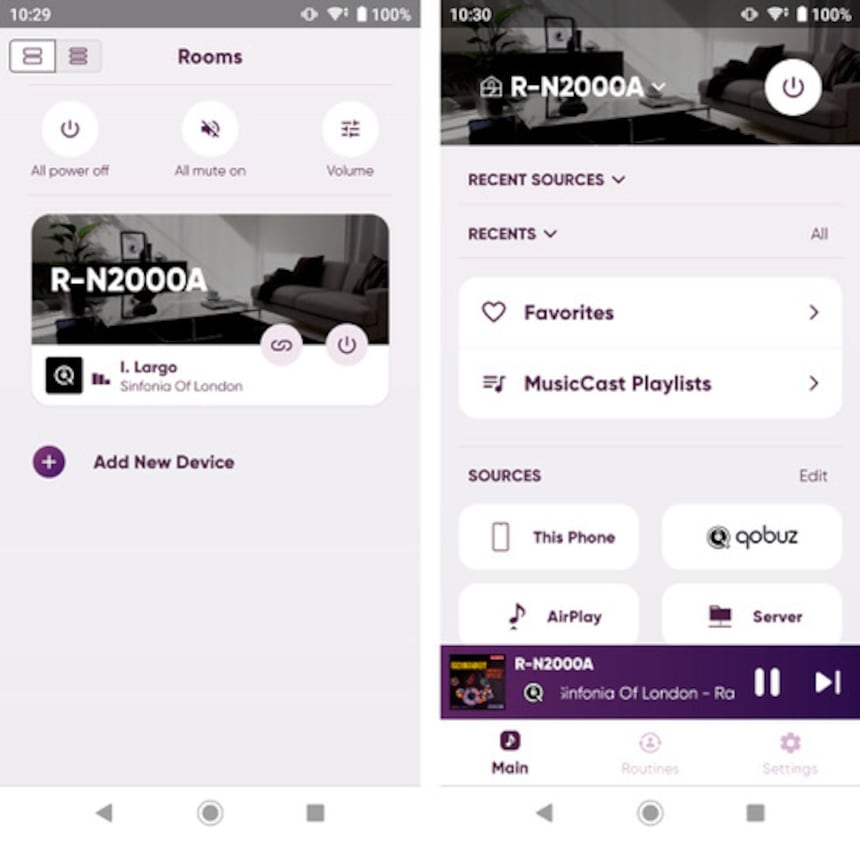
Since its last major update, the MusicCast application has integrated its ‘routines’ feature. These are types of memory characteristics associated with different choices. For example, it is possible to programme a routine which, in one click, will turn on the amplifier and specifically resume Qobuz playback (with the last track listened to).
Listening
We quite simply chose to connect our Dynaudio reference speakers to the R-N2000A, after initially carrying out YPAO automatic audio calibration. It literally took 30 seconds. We connected the microphone and then launched the operation which gave us 10 seconds to leave the room. The amp plays frequencies alternately on the two speakers and that’s it! It is possible to activate and deactivate the YPAO directly from the playback screen (via the settings menu) in order to compare with and without.
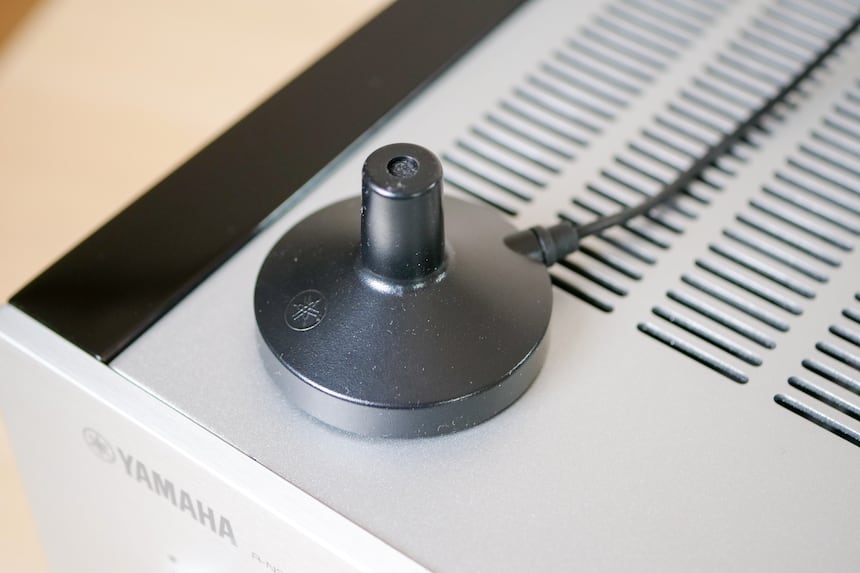
As a result, we were able to identify how this calibration worked, which is essential for us. It would be a waste not to take the 30 seconds calibration requires as it improves the sound on all levels. The centre gains clarity, with voices even more clearly defined against the rest of the message. The sound stage gains texture across its entire width, and the bass also becomes less distorted. In our semi-prepared test room, the result is pretty convincing, so we’ll let you imagine an unprepared room.
To judge the dynamic capabilities of this integrated Yamaha, we start with Demuir’s electro. Fear not, it holds on to our Dynaudio speakers with an iron fist. The main characteristic that immediately stands out is the substance. There’s plenty of it across the entire bandwidth, with a powerful sonic bubble that sits centre stage. The bass is articulate and demonstrates a certain depth, yet the Yamaha doesn’t overdo it or sound cartoonish.
The R-N2000A has a deep and vertical soundstage. When listening to great orchestral formations such as Rachmaninoff’s Symphony No. 2, the speakers completely disappear allowing the music desks to express themselves in all their glory throughout the room. The reverb information fully enhances the experience by giving an impressive sense of openness. Everything feels natural: at no point does the amplifier seem to force or project the sound. It gives the impression of total control.
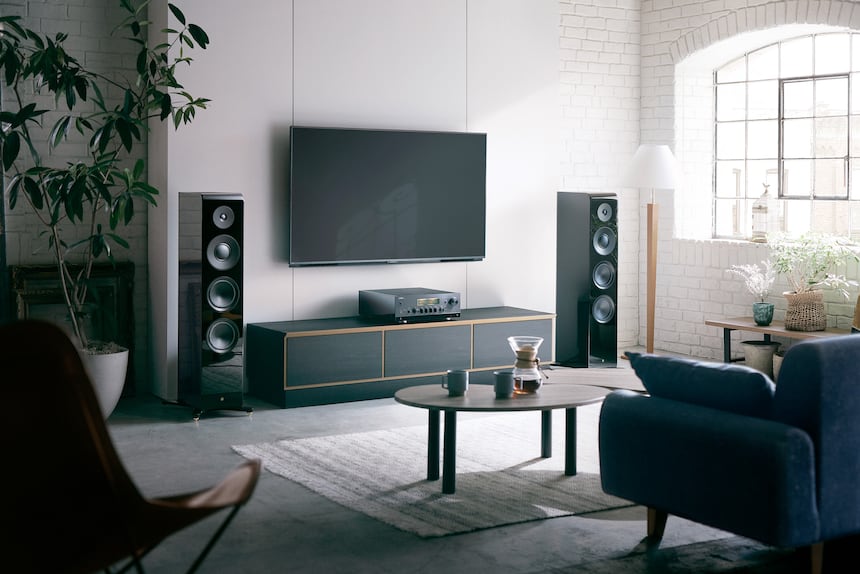
On tighter recordings like Eric Bibb’s blues album Ridin’, the effect of presence is striking. The voice is perfectly outlined, and the presence of space between the instruments is distinct. It seems to be playing out right in front of our eyes as its presence converges on the centre stage, yet it doesn’t prevent the rest of the message from unfolding in the background. The timbres play with neutrality. Nothing dominates and there is no excessive heat. The R-N2000A gives way to the music and faithfully reproduces it just as it was recorded.
Listening to the vocal jazz of Emilie-Claire Barlow, on her latest album Spark Bird, her presence is striking. The intonation, the breaths, the end of notes, absolutely everything is described. In addition, the voice is slightly elevated above the instruments, which serves to reinforce its authority, unlike in other systems where everything is stuck in the same plane. In contrast, the Yamaha will not work miracles with old recordings where the bandwidth is shortened.
We also used the R-N2000A in an audio/video context using its HDMI socket. We hooked it up to a TV that had an Apple TV media player connected to it. The latter’s remote control allows you to turn on the television and the R-N2000A with a simple touch of a button, and controls the volume. This ease of use is just delightful and makes the amp’s handling feel totally transparent. You don’t even need the MusicCast app for your daily music and TV use.
